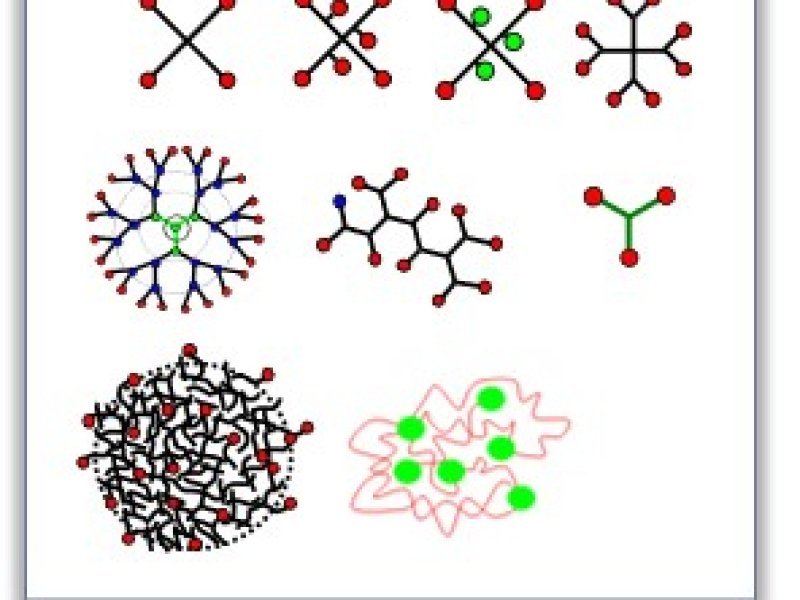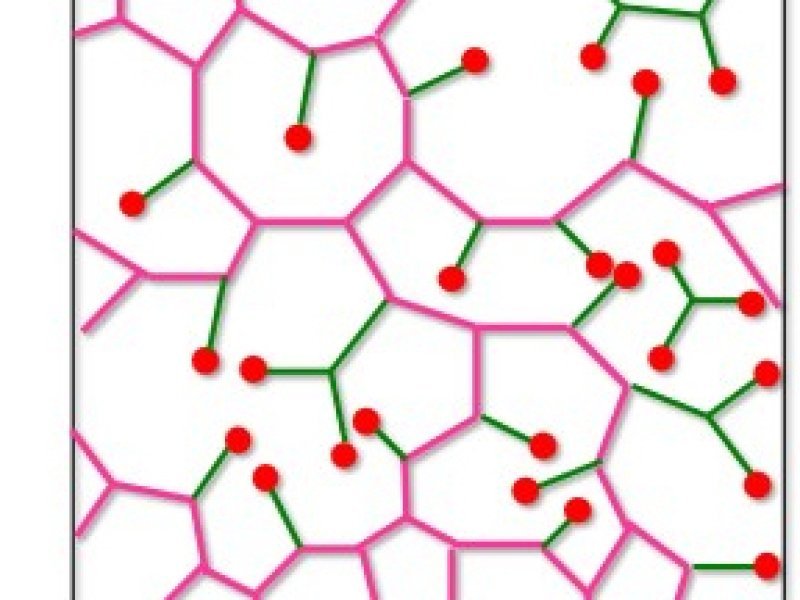Modeling the structure of 3D macromolecular networks
Advisor: Ján Šomvársky (DMP FMP CUNI)
Funding: Basic
Website: http://kmf.troja.mff.cuni.cz/
Contact: jan.somvarsky@mff.cuni.cz
The 3D-infinite structure of macromolecular networks brings shape memory, insolubility, elasticity, reversible deformability, and resistance to chemical and physical factors into the material. Network-based materials are used in a wide range of applications: from thermosets, composites, and elastomers to sorbents in technical areas to soft and highly hydrated hydrogels in biomedical and environmental applications. Cross-linked and swollen gels make it possible to convert chemical changes into mechanical ones and thus do work - applications in robotics and diagnostics.
The structure of the network at the molecular level has a decisive influence on the behavior of the mentioned materials, but there are still no analytical methods that would allow the structure of the networks to be mapped directly from the experiment. Modeling the construction and structure of macromolecular networks is thus of great importance as a key to understanding their properties, especially deformation behavior.
Recently, much attention has been paid to constructing polymer networks from small, precisely defined molecules – functional precursors whose nanometer-level architecture can control the macromolecular system's macroscopic properties. Quantitative description and modeling of the structure development of polymer networks are therefore essential for interpreting and predicting the properties of crosslinked systems.
The work aims to improve, generalize and compare theoretical and simulation methods for modeling the structure of networks formed from precursors of different architectures. One method approaches structure development as a process driven by chemical kinetics. The corresponding system of differential equations can be solved by numerical methods or Monte Carlo simulations. However, chemical kinetics cannot be used to obtain structural information about an infinite molecule (a molecule permeating the entire sample) – gel, which is key to mechanical and other properties and is therefore combined with statistical methods (theory of branching processes, TVP). TVP can also be applied standardly to networks built from precursors by including correlations to neighbors up to a sufficient distance. The second method will be percolation simulations. The basic algorithms for both methods are known, but it will be about incorporating more subtle influences and developing more general standard procedures.



